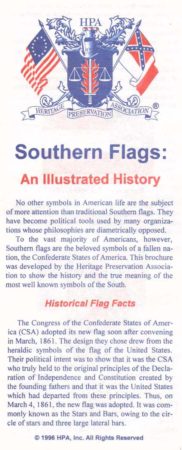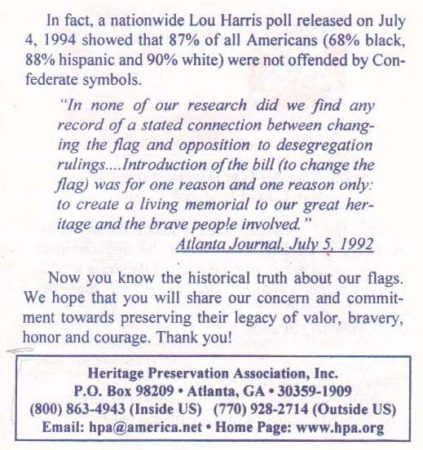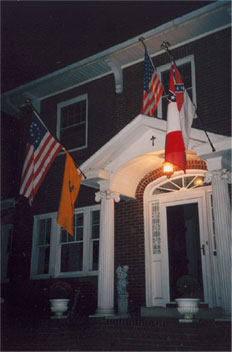Flags of Interest
FIRST OFFICIAL UNITED STATES FLAG
The first official United States flag, adopted by an Act of Congress on June 14, 1777. According to legend, a group headed by  George Washington commissioned Philadelphia seamstress Betsy Ross to execute their design for presentation to Congress.
George Washington commissioned Philadelphia seamstress Betsy Ross to execute their design for presentation to Congress.
Flown in Confederate naval vessels. Flag was devoted for the St. Andrews Cross.
Due to the fact that the 2nd National’s pure white field could be mistaken for a flag of surrender, on March 4, 1865 this last flag of the Confederacy was adopted. This design added a red bar to the end of the “Stainless” flag. This flag flew for thirty-six days in 1865 until the South surrendered on April 9th.
|
Gadsden, Christopher (1724-1805), American patriot, was born in Charleston, South Carolina, in 1724. His father, Thomas Gadsden, was for a time the king’s collector for the port of Charleston. Christopher went to school near Bristol, in England, returned to America in 1741, was afterwards employed in a counting house in Philidelphia, and became a merchant and planter at Charleston. In 1759 he was captain of an artillery company in an expedition against the Cherokees. He was a member of the South Carolina legislature almost continuously from 1760 to 1780, and represented his province in the Stamp Act Congress of 1765 and in the Continental Congress in 1774-1776. In February 1776 he was placed in command of all the military forces of South Carolina, and in October of the same year was commissioned a brigadier-general and was taken into the Continental service: but on account of a dispute arising out of a conflict between state and Federal authority resigned his command in 1777. He was lieutenant-governor of his state in 1780, when Charleston was surrendered to the British. For about three months following this event he was held prisoner on parole within the limits of Charleston; then, because of his influence in deterring others from exchanging their paroles for the privelges of British subjects, he was seized, taken to St. Augustine, Florida, and there, because he would not give another parole to those who had violated the former agreement affecting him, he was confined for forty-two weeks in a dungeon. In 1782 Gadsden was again elected governor, but declined to serve on the ground that he was too old and infirm; in 1788 he was a member of the convention which ratified for South Carolina the Federal constitution; and in 1790 he was a member of the convention which framed the new state constitution. He died in Charleston on the 28th of August 1805. From the time that Governor Thomas Boone, in 1762, pronounced his election to the legislature improper, and dissolved the House of consequence, Gadsden was hostile to the British administration. He was an ardent leader of the opposition to the Stamp Act, advocating even then a seperation of the colonies from the mother country; and in the Continental Congress of 1774 he discussed the situation on the basis of inalienable rights and liberties, and urged an immediate attack on General Thomas Gage, that he might be defeated receiving reinforcements.
CHCO Headquarters displays the historic flags of our great nation. One Nation under God. The mission of the CHCO is to preserve, restore and erect monuments, promote true U.S. history and the sovereignty of the United States of America.
|













